#nier gestalt spoilers
Text
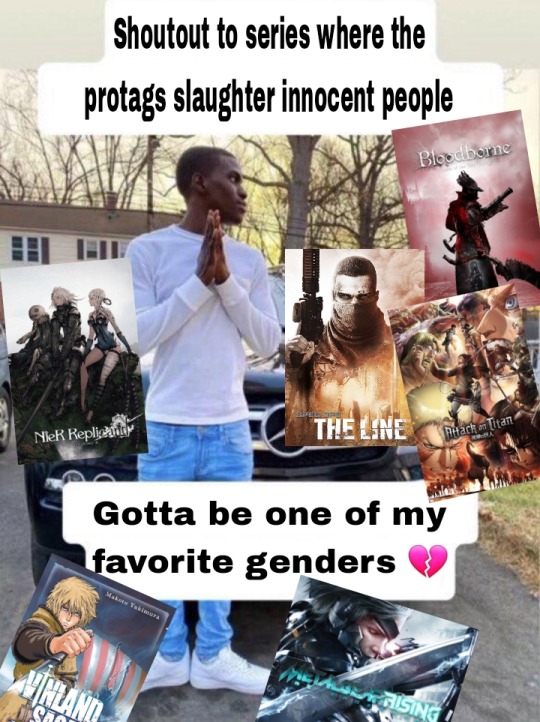
I love it when the protags get slapped across the face with the fact that they're committing horrific acts upon the undeserving and gotta take a step back to gauge whether or not their goals and their means are actually worth it or not.
#gotta be one of my favorite genders#nier#nier gestalt#nier replicant#vinland saga#metal gear revengeance#metal gear series#metal gear rising#metal gear#attack on titan#shingeki no kyojin#aot#snk#snk spoilers#spec ops the line#spec ops#do you feel like a hero
804 notes
·
View notes
Text

NO ONE STOPS!!!
#nier#nier replicant#nier gestalt#nier spoilers#devola#popola#devola and popola#j's art#GOD THIS SCENEEEEE#i cried for like an hour my first replicant playthrough#i love these two so much they did nothing wrong btw
286 notes
·
View notes
Text
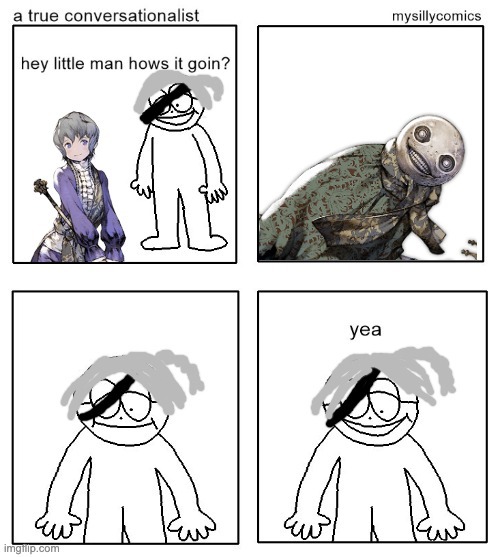
that boi straight up just became a skeleton
-nier, probably
#another day of emilposting#nier gestalt#nier spoilers#can we just talk about how his reaction to emil becoming a skeleton#at least in gestalt which is the one i've played#was just “yeh. I know.”#what a relatable king I also don't know what to do when ppl cri#let alone become skeletons
99 notes
·
View notes
Text

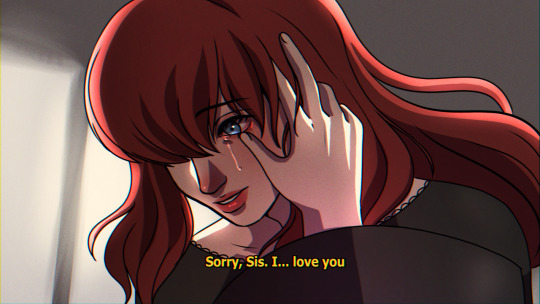
Devola: You know, Popola, I understand now why we're twins... It's because... Because we were born without souls.
Popola: *gasp* Devola, I can't stop the bleeding! Oh God! I can't stop it!
Devola: This world is too... agh... too lonely for one without a soul. There's too much... emptiness... Our souls are missing... And yet somehow our tears still work. It's kinda weird. Sorry, Sis. I love you...
#I'm not crying you're crying#nier#nier replicant#nier: replicant#nier replicant 1.22#nier: replicant 1.22#nier spoilers#nier replicant spoilers#nier gestalt#devola and popola#devola#popola#devola nier#my art#popola nier
134 notes
·
View notes
Text

“And now, you may kiss the bride”
#drawing#digital drawing#fan art#nier x emil#nier spoilers#nier emil#emil nier#nier replicant ver.1.22474487139...#brother nier#nier remake#nier replicant#nier gestalt#ニーアとエミール#ニーア#ニーアレプリカント#エミール
183 notes
·
View notes
Text

nier automata 2b
#2b#nier 2b#nier fanart#nier automata#9s#a2#leotard hype!#2bdamned#2bhkflats#2bhk#nier replicant#emil#nier 9s#nier gestalt#yorha 2b#nier#nier automata ver1.1a#nier automata fanart#nier automata spoilers#nier automata 9s#nier automata 2b#sketchbook#artwork#drawing#my draws#illustration#characterart#fanart#sketch#charcoal
50 notes
·
View notes
Text
Realizing that the end of humanity began with a flower for both the Drakengard and NieR worlds when the intoners were created from Zero which led down to Manah being born and Yonah going to find a lunar tear at the ancient shrine which led to the failure of project gestalt respectively

#nier#drakengard#nier gestalt#nier replicant#nier spoilers#text post#mine#tag talk#yes i am behind in realizing this probably#but damn did it punch me in the face earlier#humanity was fine#until a flower attacked#fucking plants man
21 notes
·
View notes
Text

no one stops.
#nier#nier replicant#nier gestalt#nier spoilers#nier fanart#yoko taro#devola and popola#popola#comics#fanart
33 notes
·
View notes
Text
Gayle
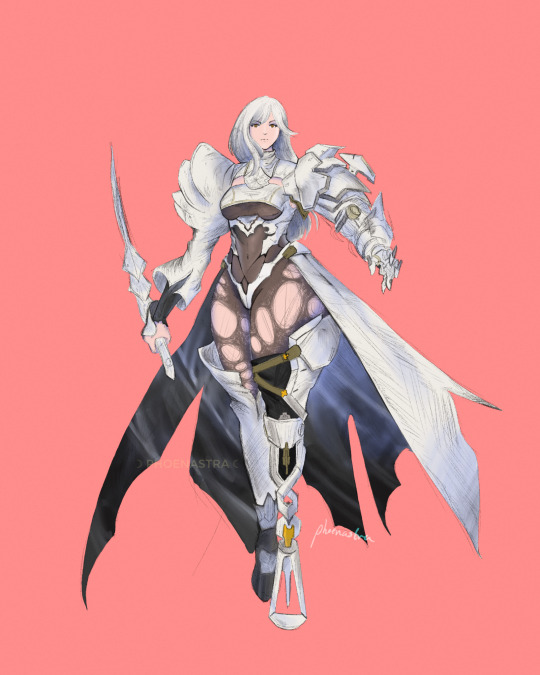
Some art of Gayle from NieR ReIncarnation. I was originally gonna do like a whole thing where I posted NieR art that looks similar to the style of the art from Reincarnation. But I guess not. Too tired. Got sick. Blah blah. I just wasn't doing well last month. Better now, but we will see.
#art#artist#fanart#nier anniversary#2b nier automata#nier 2b#nier spoilers#nier gestalt#nier automata#nier kaine#nier game#nier reincarnation#nier replicant#nier gayle#gayle nier#nier#nier fanart#nier fan#yoko taro
35 notes
·
View notes
Video
youtube
Shadowlord - EPIC ORCHESTRAL COVER/MIX (Nier: Replicant Spoilers)
Remember sharing this before but idr where it went~~~
#youtube#youtube video#music#nier#nier gestalt#nier replicant#nier gestalt ost#nier replicant ost#nier gestalt ost arrange#nier replicant ost arrange#shadowlord#shadowlord's theme#shadowlord orchestral arrange#shadowlord arrange#nier spoilers#not mine#just wanted to share
1 note
·
View note
Text
The themes of NieR Reincarnation
A post about the recurring elements of Drakenier and the use of branching timelines as a storytelling device. I'll be discussing spoilers for basically every DoD/NieR game.
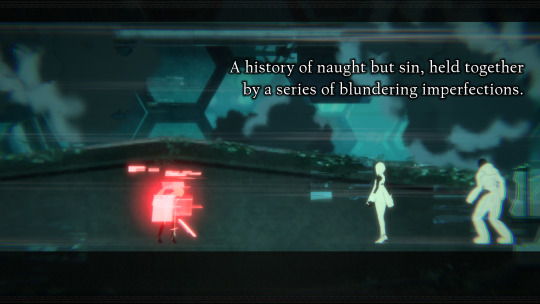
Records
A somewhat understated recurring motif of the Drakengard/NieR series is the idea of stories or memories of humanity being stored in some massive archive.
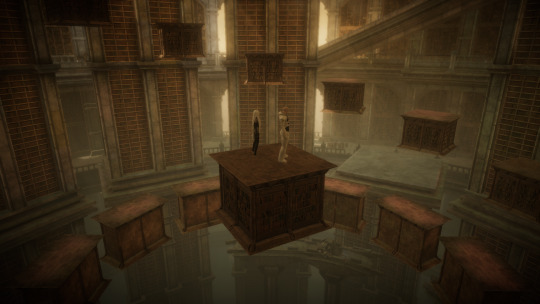
It's an idea that first entered the series in NieR Gestalt/Replicant. Early drafts of the game focused on the idea of a world built out of stories and fairytale characters, and while most of this was cut, some remained in the Forest of Myth area.
Following NieR's obsessive love of hopping between different game genres, the story here is delivered through prose/text adventure segments. There is a sense that this area of the game exists as prose, with the characters slightly aware of narration - narration which absorbs the characters until you find a way to escape. Eventually you find out - it's rather cryptic in the actual game, but spelled out explicitly in Grimoire NieR - that it's a huge computer system storing records of the deceased humanity.
In your second visit to the area, the story focuses more on distant history, that all these stories are fragments of memory of the lost pre-apocalpytic world. You encounter a Gestalt (human soul extracted from body) that is eating the memories stored in the tree, and kill it, and for Nier and co., this is enough - but for the player, you really don't know half of what is going on.
In the story The Lost World, which was adapted for the additional Ending E added in the Replicant remake, Kainé returns to the Forest of Myth and finds the computer system expanding. She fights clones of herself before eventually speaking to a mysterious administrator and descending into a virtual world that seems like a corrupted version of her memories. But she's able to connect to her memories of NieR, Emil and Grimoire Weiss, and through that connection cause a kind of timeline collapse effect that allows her to resurrect Nier. Terms from DoD3 such as 'singularity' come back again.
youtube
In NieR Automata, the idea of the legacy of humanity becomes increasingly central. While the androids believe they are reclaiming Earth for humanity, the Machine Lifeforms' motivation is in large part driven by their efforts to pore over the records of humanity and learn how to evolve their condition, even by blind imitation. Many of the different Machine Lifeforms you encounter are shaped by their interpretations of human society. The motif of human buildings recreated in white blocks recurs at certain points.
In the final sequence of the game, you climb a tower, and inside it visit simulacra of locations from the Replicant/Gestalt. You learn that the machines have infiltrated the androids' network and downloaded basically all the information the androids have, including all their records of humanity. When the machines' 'Ark' is launched into space, it carries their memories and consciousness in data form.
The YoRHa: Dark Apocalypse raid series in FFXIV continues this idea of obsessive, blind reconstruction. The machines you fight here are now all the more explicitly connected to the apocalyptic shit in DoD; they have also been frantically creating duplicates of YoRHa android 2P, the Bunker and so on in corrupted form. Although the story here has mostly other interests, it's another recurrence of the idea of trying to recreate things that were lost.
Along with this idea of the archive comes the idea of preservation of that archive. Whether by accident or deliberate attack, the survival of the archive is not guaranteed.
This is all absolutely central to what Reincarnation is about.
Branches
The Drakenier series has played around with branching narratives pretty much from the start. It's somewhat infamous for it in fact - did you know that NieR is actually a spinoff of ending E of Drakengard, the one where you appear over Tokyo and have to do a rhythm game? Yeah, so...
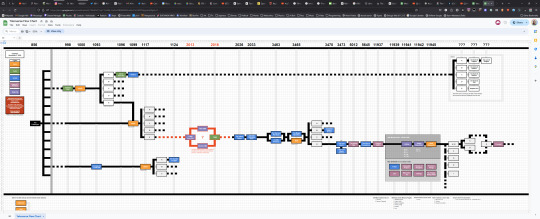
Most games are fairly cagey (ha ha) about the mechanics of these branches. Indeed, although we speak of branches, the structure of these games is not really a branching one like a visual novel. The branches and 'endings' are usually unlocked sequentially.
Drakengard/Drag-on Dragoon (DoD1) is probably the closest you get to a traditional branching structure. You can unlock routes in certain missions by fulfilling certain conditions. The exact logic of these branches is not really explained - you can go back to a point before you recruit a party member and get a different branch where they're present for example. That said, it's not like a visual novel where you can be 'on' one branch or another - you can always jump to any level from any timeline.
This oddness of the branches is also lampshaded a little more in DoD3, the game that is most explicit about the nature of the branching timeline. DoD3 is, from the player perspective, a linear game. After you complete the first 'ending', you unlock new levels that appear at earlier points in the timeline, and diverging branches appear. In the later branches, the logic of the world is starting to break down. Party members who you'd recruit later in the story are in your party much earlier, in some cases suffering from amnesia, the implication being that it's an effect of the Flower's corruption.
The game is intermittently narrated by a character called Accord, an android 'Recorder' whose job is to document all the different versions of the story for an unknown party. Accord isn't supposed to intervene in the story, though she occasionally talks to protagonist Zero, and in the final D route, she decides to break the rules and save Zero. Otherwise, she's responsible for 'sealing' branches where it seems the world cannot be saved.
This is Accord:
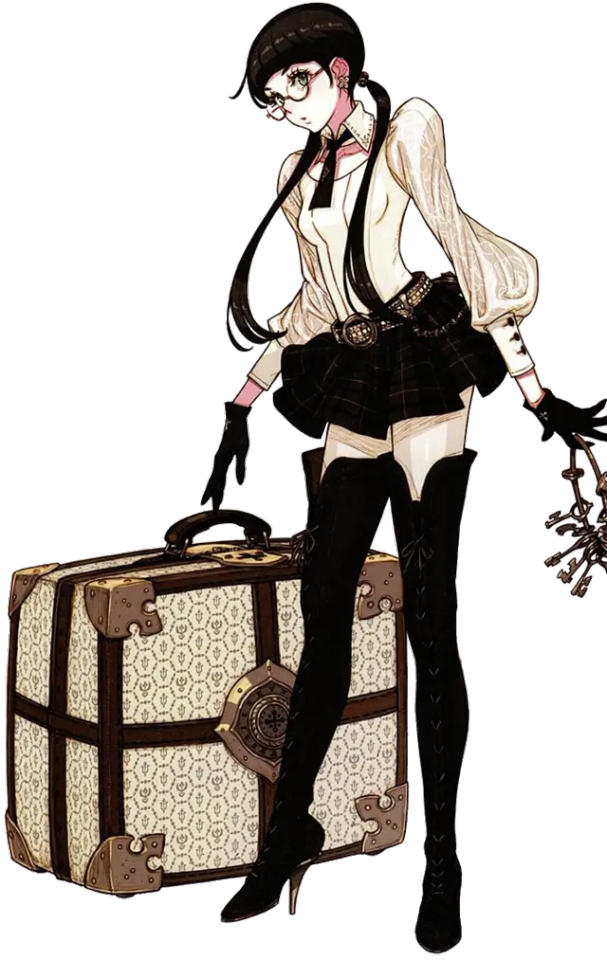
The final cutscene of DoD3, available only after you beat the ludicrously difficult rhythm game that is the 'final song', shows a bunch of other Accords appearing and talking about what a mess this all is.
Accord's other role in the game is to sell weapons. Another series tradition running back to DoD1 is the 'Weapon Stories'. In each game, you can collect weapons, which can be upgraded through a series of four stages. Each stage unlocks another part of a story. These stories tend to be quite brief - each entry is at most a short paragraph. They also, particularly in the DoD games, tend to be comically grimdark.
DoD 3 came out after NieR Replicant/Gestalt, but in every game since then, there have been cryptic mentions of Accord. In Automata she's mentioned in a note as a weapons seller; in the updated version of Replicant she is mentioned as visiting Nier's village while the party is away on her adventures, and you see a documention that mentions the 'Accord Corporation' supplying magic weapons.
OK, so, put a pin in that, we'll come back to her later.
The side material commits further to the branching idea. The original Drakengard is established to follow from the DoD3 Story Side novel, while Branch A gives rise to the Shi ni Itaru Aka manga and the DoD 1.3 novel. The YoRHa stage plays spawned alternative versions, namely YoRHa version 1.3a and Shōjo YoRha version 1.1a, with the gender of the casts flipped. YoRHa 1.3a also has Accord in it. The anime NieR Automata ver. 1.1a also presents an increasingly diverging version of the events of the game - notably, Adam turns into a multi-armed monster.
DoD2, something of the black sheep of the franchise, was originally written to follow DoD1 ending A; later it was retconned to belong to its own branch. Just 'cause.
With me so far? ...no? Yeah, that's fair. You can read about all the details I've gathered so far here, but in short, there are lots of timeline branches, and multiple versions of several stories with small or large divergences.
Reincarnation
NieR Re[in]carnation is a gacha game that's been running for the last three years, and is going to be shut down at the end of April. At the time it came out, it was acknowledge for having unusually nice graphics for a mobile game, but rather desultory, grindy, repetitive gameplay. Which remained true throughout the game's life, so I can't exactly recommend playing Reincarnation, especially at this point.
But! I would definitely say it's worth your time to dig up the story on Youtube/Accord's Library if you're into NieR stuff. I won't be going into all the ins and outs of the story and how it all fits together in this post, but I am gonna talk about how it's structured.
NieR Reincarnation places you in a vast stone city called the Cage, calling to mind the environments in Ico. At the outset, you play as a young girl travelling with a weird ghost-like creature called Mama, tasked with restoring the memories stored in objects called 'dark scarecrows' which are being subverted and corrupted by black birds which form into various monsters.
Within each chapter of NieR Reincarnation, you get a short story in four parts, presented in a kind of cutout style, which are the four segments of a weapon story. You collect the weapon and the character.
The Cage is shaped by the content of the weapon stories somehow bleeding into the simulated setting. A character's memories can be used to restore the stories to their proper course. It is possible to interfere in small ways with the worlds of the stories.
The corruption of the stories tends to involve subverting characterisation to make them crueller, more prone to random violence etc. - or points when a character could be threatened in a narratively unsatisfying way. For example, a peace-loving runaway prince could be turned into a warlike king.
Over the course of the first arc, you discover that the girl you are playing is actually a monster who has taken the form of a human girl and, regretting it, wants to give her her embodiment back. The second half of the arc has you playing the girl trying to reunite with her monster friend; at the end, you get her own backstory as a victim of brutal prejudice. After all is said and done, both characters transform into weapons, which Mama picks up and hides away.
The second arc, The Sun and the Moon, deals with a brother and sister from present-day Tokyo. Both of them have been transported into the Cage by more of the weird ghost thingies, to participate in a strange ritual that is allegedly going to restore the Cage. The rules are highly mystical - a significant sacrifice is needed.
In the most recent arc, The People and The World, the characters all emerge from their stories as the Cage becomes increasingly corrupted. We finally get the long awaited point where these characters can interact with each other, and advance the stories from a series of tragic vignettes to something more. At the same time, we get a lot more allusions to other games in the series - from the Lunar Tear room where Emil memorialised Kainé and later 9S memorialises 2B, to a brief appearance Devola and Popola.

There's even a nod to Yoko Taro's other terminated gacha game, SINoALICE, which is going to be made into a movie oddly enough. There's a wry nod to the game being shut down.
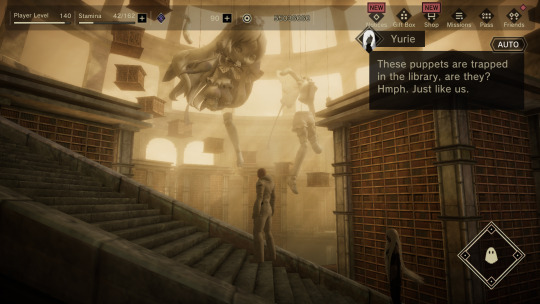
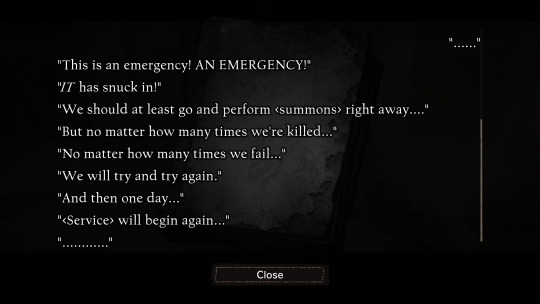
And in the most recent chapters we find out that the Cage is actually a server on the moon containing records of humanity - 10H from A Much Too Silent Sea is one of the main characters. 'Mama' is actually the Pod tasked with overseeing the archive, and wiping 10H's memories whenever she learns too much - though it seems at some point 10H learned the truth and affirmed that she'd protect the archive anyway and they stopped wiping her memory.
Over the course of the chapter, 10H helps the gang make their escape from the moon through the androids network, to Earth. But when they get to Earth, they find themselves in a strange white city more resembling the Cage.
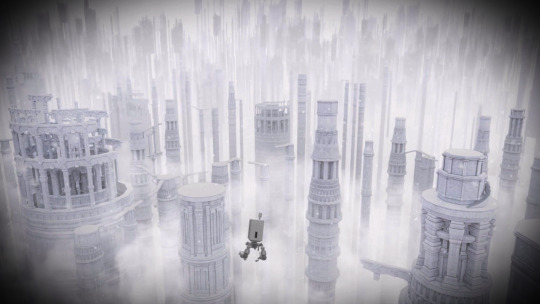
We'll finally get some answers, maybe, later this month. Anyway...
So, these records come from multiple diverging timelines, and they take the form of weapon stories. You have a unity of the ideas of character - weapon - memory - world. A record is simultaneously a tragic series of events, a person who can manifest inside the Cage itself, a simulated world which other people can visit, and a weapon.
In addition to the main storyline chapters and 'character stories', each character is associated with two additional 'EX' storylines, termed Dark Memories and Recollections of Dusk. Each one is a much more substantial narrative than most in the game.
Some of these EX stories clearly take place in different timelines to the first ones we encounter. Akeha's story, for example, takes place after her death in the original version. For the brother and sister from the Sun and the Moon arc, originally from present-day Tokyo, their Dark Memories take place in the backstory to NieR Gestalt/Replicant - the period where humanity is dying out to White Chlorination Syndrome and fighting monsters called the Legion. In this one, before the siblings could be torn apart by family drama and resentment, the apocalypse happens. Both of them end up coming into their own as heroic fighters. In the finale arc, the characters learn a bit about these alter egos, and it's made very explicit that this is a different timeline.
The monster Levania's Dark Memory is especially weird. It's the story of a salaryman who plays a monster called Levania in an MMORPG. His MMO character inspires him to live more bravely in the real world, and his life seems to be improving, but he is murdered by a jealous coworker. He wishes for reincarnation as he dies - classic isekai stuff. But the connection to the Levania you encounter in the main story is far from clear. Are all versions of Levania derived essentially from this man's tulpa?
The nature of the 'enemies' attacking the Cage is still not yet clear. They take the form of black birds. The birds are given a small amount of dialogue and characterisation, and they seem to not be malicious, just confused. The girl from the first arc in particular tends to interact with them sympathetically. However, they seem to be connected with the mysterious 'God' who was trying to destroy the world in DoD1, and the Angels and Flower of DoD3.
The birds are able to gathe together to manifest much larger monsters, the largest being giant elk and fish called Cursed Gods. During the finale arc, one of these becomes something that resembles the Mother Angel from DoD1 - and yes, there is a rhythm game - though mercifully a pretty easy one.
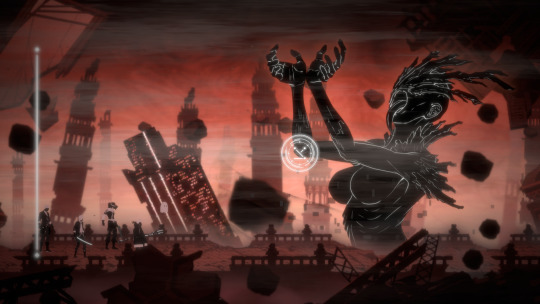
In the same arc, the character Yurie, an AI city overlord with grandiose ambitions and a loathing of imperfection attempts to download the entire history of humanity from the Cage and become a more perfect being. She succeeds, only to find the answers disappointing...
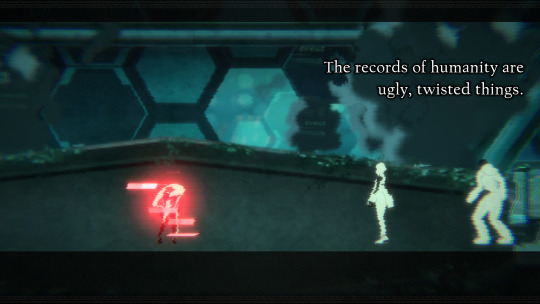

This is perhaps the closest thing we ever get to an explicit statement of what all these stories and histories add up to, but despite all this, the throughline is very strongly that these stories are essential to preserve. NieR characters exist in small groups, and it is their intense connections to these others, their treasured memories of travelling together, that motivate them to fight to preserve that thing, even if the results are destructive.
Similar themes emerge for example in Noelle's Recollection of Dusk story, which sees her travelling to preserve a place valued by her sister in crystal. And they also connect to the theme of sacrifice - the recurring ending device where the player must delete their save data in order to help someone (something echoed in Hina and Yuzuki at the altar of the sun and moon, or Levania and Fio). It's perhaps fair to say that nothing is more valued in the world of Nier than memories of a treasured person.
What about Accord? She has in fact made a brief cameo in Reincarnation already...
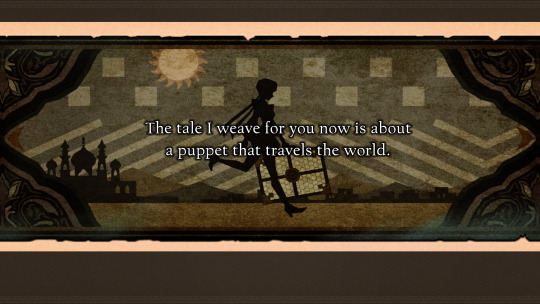
It seems incredibly likely that Accord originates from the Cage, and the accumulation of weapon stories is accomplished by androids like her. Definitely in the fandom there's a lot of excitement for the idea that Accord - something of a fan favourite - will show up at Reincarnation's ending.
So mystery solved, the Cage exists in the world of NieR Automata on the moon server? Not so fast - there are various discrepancies which seem to suggest that the world of the Cage exists in a separate branch than the one we see in Automata. For example, the androids are aware that the humans are dead and what remains on the moon is a huge archive of their memories; the humans seem to have survived much longer; 2B and 9S seem to have died in different circumstances. There are other oddities which fans have compiled.
And yet, despite being a divergent timeline with a much older point of divergence, some things seem to be fixed. There is still a YoRHa, still a 10H deceived about being on the moon, still a 2B and 9S.
One popular fan theory is that Reincarnation belongs to the NieR Automata anime (ver1.1a), since Adam turns into a monster there similar to the ones in Reincarnation. The black birds are reasoned to be the Machine Lifeforms, since we know they come from Earth. I'm not 100% sure of this, but maybe?
Anyway, that's basically the gist of it.
A story told through permutations
In many fictional series with a shared universe, there is an effort to maintain a consistent shared universe, so all the different events can fit into a timeline with understandable cause and effect and characters living out their lives. Even when this proves impossibly unwieldy, as in comic books or Star Wars, the attempt is made.
NieR does not really take this approach. The creators leave many details of the world, such as place names, incredibly vague - the focus is always on telling an emotional story with characters. There is, as we've seen, an almost gleeful willingness to declare another new timeline.
There is also a certain aspect of repetition, or more kindly reiteration - the same core character dynamic revisited and retold in various forms. (2B9S gets the worst of it). A character is something like a principle or ideal, and each story shines another light on that 'core'. In the earlier storylines of Reincarnation, it became quite frustrating because it seemed like e.g. the character event stories were just rehashing the same idea rather than advance the story.
However, the more accustomed I get to this style of storyline, the more I think this kinda works. It is of course quite similar to the ideas proposed towards the end of Homestuck, or to time loop stories - the idea of varying the contingent circumstances to try to better illustrate the core characterisations and dynamics.
Yoko Taro has talked about how he constructs stories from a very simple idea, typically a moment of high emotional impact at the climax, and then works backwards to figure out what sort of story could lead into that. In Reincarnation, each character gets fairly limited time to establish themselves, so they tend to be defined in terms of a pretty narrow high concept.
For example, Akeha is an assassin in a vague historical Japanese setting; her introductory story sees her decide for the first time to disobey her lord after she finds another person who has been treated as instrumentally as her. Most Akeha stories focus on her assassinations, her relationship to her retainer, and what she sacrifices to perform the duty. Only her Dark Memory lets us see an Akeha who has escaped that life - it's a simple story about preparing food, but that's given meaning by all the other Akeha stories.
Hina and Yuzuki are defined by the same traits in their flashy scifi Dark Memory stories as in the more mundane ones - Yuzuki the quiet outcast, Hina the self-sacrificing star. Fio is defined by kindness in the context of abjection, seeing the good in monsters. Levania stories are about the desire for escape and transformation. Argo is always a shitty dad who only feels alive while climbing mountains.
The staticness of these characters seems on some level to be the point - in that we are told in Hina and Yuzuki's story that the mechanism of the Cage is to sort characters into 'Light' and 'Dark' natures, and push them to inevitable conflict, even if they try to break free. In the final arc, the characters seem to finally approach some resolution as they leave their contexts behind. Given the themes of Automata in rejecting an inevitable tragic fate, similar movement may be at work. There's an ambiguity - the need to hold on to even tragic histories, vs the wish to not be confined to them. (Perhaps it's significant that it's called the Cage...)
With so many balls in the air and so many mysteries still unanswered, it's hard to figure out how Reincarnation can deliver a satisfying resolution in just one remaining chapter, but the final arc has been really cooking so who knows! But I'm also coming to appreciate it as a kind of broader lens to notice all these recurring elements and tie them together.
Stories about alternate timelines and branching narratives are very common nowadays, particularly as a tool for revisiting a nostalgic franchise. Something something effect of the fan wiki era. So I can't exactly say NieR is doing something completely unique, but I do think there is something to its fragmented, collage-like approach to putting together story elements. There's something quite honest about it - an ability to say 'these details aren't important'.
Yoko Taro always talks about himself as an entertainer rather than an artist. And probably it is true that a lot of this eemerged from an iterative design process rather than being the plan from the beginning (the first draft of NieR envisioned it as something closer to what SINoALICE ended up being, about a world of fairytale characters; NieR Automata began life as backstory for an idol project). There's definitely a strong sense that it's being improvised. And yet despite that, it does feel like it is cohering into some sort of picture, that there is an artistic throughline to all this.
Or perhaps that's just the effect of getting way too invested in something. I won't deny that NieR brings out the fan in me.
Anyway Accord had better show up next month. Guys. You've been teasing us for so long...
#nier#nier replicant#nier automata#nier reincarnation#drakengard#drakengard 3#computer games#Youtube
175 notes
·
View notes
Text
Finding a human waking up from cryogenic sleep

[ PLATONIC HEADCANONS ] [ 9S & 2B ]
[ NieR Automata ]
⚠️ This contain heavy spoilers

Can you do me a favor and read this while hearing NieR Automata Soundtrack? I recomend City Ruins
Some time ago I read a fic that raised this idea but did not delve into it, and it had been in my mind for a long time so i decided to do it myself!!I loved how it ended so i hope you enjoy it as much as I did!! 🖤

A long time ago an strange plague scourged humanity and triggered a deadly disease, a big group of humans started the Gestalt Project in hopes to preserve humanity, putting humans soul in another container (that doesn't went too well). A part from the humans didn't completely trusted in the Gestalt Project so those humans started another projects with their lasts hopes, and as the last resource they put the people that wasn't infected yet in cryogenic sleep waiting for a better time where the threat of this disease no longer exist
However, this side project was almost completely forgotten and when the rumors of the humans who had survived were in the moon began to spread the one of the other humans in cryogenic sleep started to spread too, however this humans were taken just as a mere rumor and were leave there since the creators of YoRHa didn't had evidence of this project
It isn't too weird to think that you will be found some day, and that days seem to finally happen thanks to the YoRHa unit 9S, a scanner type that has been wandering around to collect information. Is probably that he is already with 2B, since the two of them had different missions around the land, and suspicious facilities of which they have no registration is something that is necesary to investigate
While they were trying to decipher what is the purpose of all of that they accidentally active the system of one of cryogenic chambers, starting the protocol of reactivation, imediatly getting themselfs on guard, ready to fight in case they need it, watching carefuly as the chamber open slowly only to reveal that inside of it was a human, you
As you slowly start to incorporate, with slow movements and trying to sit down 9S is the first one to react, guarding his sword and quickly going to your side, gently helping you sit down but still unable to say something, 2B doesn't waste more time before approaching to you too but still in shock. Non of them know what to do or what to say, even when the whole purpose of the androids is to protect humans, to fight to bring them a better future they had never actually met a human, an inmense curiosity and still a protective instinct immediatly fills both
If you react by being afraid of them they understand, both immediatly take an step back and quickly introduced themselfs, 9S is the one explaining the situation while 2B just comfirm the information, promising that the last thing they will do is to harm you. In the other hand if you are more comfortable with them or even excited to meet them 9S quickly match you energy, as well they don't waste much time to introduce themselfs but 9S is almost imediatly asking about you (just like an excited child receiving a new toy), while 2B try to calm both not wanting to overwhelm you or go against the protocol if there is even one
Once you are comfortable and ready 9S helps you get out or the cryogenic chamber while 2B contact the commander to ask what to do, however even the commander was surprised, in all the information she has about humans there isn't anything about some being in cryogenic sleep (or at least nothing that was for certain) and yet you could be the only human still alive, the commander can't take any risks when it comes to you, so while she investigate all she can about it and come up with a plan she ordered to both to take care of you and protect you at all cost (she prefers to don't tell anyone about this for now, but at some point she will tell the news to everyone to boost the androids morale)
You will be scorted to the resistence camp and stay there, where Anemone imediatly accept you without ask and give you an own room for you. Everyone will be really curious about you and will want to approach to you but 2B and 9S, along with Anemone, are trying to don't overwhelm you, and, at the end, is Anemone, Devola and Popola who is mostly taking care of you when 2B and 9S aren't around
As well you will be able to meet Pascal and the complete village, but not without making sure you will be comfortable in there before hand (and until 2B and 9S finally trust them, what Pascal completely understand), in the resistence everyone has similar appearance to yours so is little risk for you to freak out, but with Pascal everyone are machines so they first need to make sure you know that and you are comfortable (even so 2B will be paying close attention to everyone)
The only time 2B and 9S leave you alone is when they have a mision and they know that there is the risk to find ostile machines and that you could be in danger, so in those moment they leave you in the resistence. However is more likely that at some point you will want to explore the world too and you will be able to convice them to let you do it, 2B will be hesitant to do so and my even try to ask for permission to the commander while 9S is a little more willing to do it since they will be by your side (and he understand your curiosity), and is better if you just talk to them about your wish than trying to sneak out of the resistance camp because if they came and you aren't there for them will be like the end of the world, wasting no time and imediatly rush out to try to find you (what won't really take them much time), even when they aren't mad at you they are worried sick and will scold you for it
Whenever you go with them is more likely that 9S is the one leading and talking with you because 2B is too worried watching her surroundings, wanting to be ready for anything that could happen, however if you try to talk to her and include her in your little excursion she will start to be more talktive too
As much as they know about their habilities and that they are completely capable of protecting you they can't help but feel anxious whenever you walk for somewhat unstable places or near machines, even the docile ones, also the more adventurous you are the more anxious and protective they are, if you are running and jumping around they try to stop you or at least to follow you as close as they can, every time you trip and fall they tent to overreact a little, even if you didn't hurt yourself
It may seem like they are overreacting but for them is just fair, they are androids, they have backups not only of their bodies but also of their minds and memories, and even with that they try to be careful and don't be impulsive, but you are unique, if something happens to you there is no way to bring you back, they can't put your mind in a backup and continue with their duty, and even if they manage to wake up other humans they won't be you
2B is the more worring and protective over you of the two of them, is just that she knows more than anyone else how important you are and your only existance represent a big hope for her about not having to do the true job she was created for, you give her hopes about not having to do what she hated the most and she wants to cling to that little hope as much as posible
At some point the news of the human that is traveling with the androids reach A2, and as much as she hates YoRHa and don't want to have anything with them in her programation is still the feeling of needing to protect humans, so she probably will try to sneak and meet you without the intervention of them, and since she isn't against you she will try to at least warn you about not trusting in YoRHa before having to go away

#nier automata#nier automata x reader#nier 9s#nier 9s x reader#9s x reader#nier 2b#nier 2b x reader#2b x reader#nier a2#nier a2 x reader#a2 x reader#x gn reader#x reader#video games x reader#anime x reader
178 notes
·
View notes
Text
Drakenier: Violence as expression and affirmation - Pt.1
It has become a rather well-known piece of trivia (or at least, well-known within the niche internet circles I flow through) that 2010's Nier Replicant / Gestalt had its overall message thoroughly inspired by well, 9/11 - the discourse that produced it, that came of it, and became it. Although it may not be a direct quote, "to kill someone, you don't have to be out of your mind, you just need to believe you are correct" is a sentiment clearly echoed throughout the game; as the many layers of its central and side conflicts drop alongside the curtains to its second, third (and maybe kind of fourth) playthrough, so does what had, for quite a ways into the game, seemed like a story mostly about finding, nurturing and protecting a community - people to call home.
However, the statement above seems to somewhat conceal-so-as-to-merely-hint-at what I'd argue is a much more complex argument the games lay forth, when looked at as one series. I, myself, have found it difficult in the past to distill both Replicant and the wider series as a whole into one coherent message or thematic frame; partly (and beautifully), because there mustn't be one - this singular reading which eclipses the broad range of experiences that people have come to share with the series - such an idea is preposterously reductive. Still, I think that this mish-mash of "the game is about philosophy and tragedy and nihilism and existentialism and society and humanity and life" and whatnot misses a bit of where the different themes intersect, producing further instances of meaning from the text. I hope to discuss the evolution (were I to sound even more pretentious, I might have used the word genealogy, but I would never stoop to that) of a few central concepts surrounding drakenier's "philosophy of violence" and where they seem to have informed or have been informed by other aspects of the works.
Strap in, because just from writing the introduction I can already tell this is gonna have to come in multiple parts. Hopefully my writing can steer away from boring you to tears throughout all of it.
Spoilers for the whole series!
Part 1: Replicant, and the subjective experience gained from that funky 9/11 fun fact
"Blood is sound, sound is words, and words are power"
This quote, almost a chant from Weiss as the player starts to grasp the gameplay loop of attacking enemies to allow for magical attacks, ties in the game's teaching of that system with what I consider to be the most powerful writing from Replicant (I'm going to refer to it as Replicant for the sake of convenience, obviously Gestalt is included in that). And it is deeply tied to what Taro himself has credited as a major source of inspiration for Replicant in relation to his previous game, Drakengard.
In some ways, Nier Replicant isn't introducing a new, foreign idea over the original Drakengard, so much as bringing out new elements from within its predecessors' critiques of the gaming landscape. Though that only really becomes clear by taking future foresights the series would reach into account; this is the point at which it becomes prudent to ask ourselves one question - how might the game's design regulate the player's interaction with the game world? (A question that, if you're at all even familiar with Drakengard, you probably already know the answer to)
From this, we can extrapolate a lot of meaning from how the original Drakengard was conceived: a game about violence, from the perspective of people who were so immersed in their own awfulness and the general precarity of their world that they cannot enact anything but that same violence. And it is that violence which comes to define them.
I'd also like to do the pedantic thing and bring up the fact that violence can be thought of as more than just physical harm, but also in terms of violation. In that sense, when I claim that Drakengard's characters are defined by violence, I mean it in that their reduction of other people to objects serves as an exertion of themselves - the Dynasty Warriors inspired combat of cleansing battlefields as the only win state reflects back at Caim as his only method of building an identity of his own, one based on strength demonstrated from conquering his enemies. You might find that these 'enemies' are violated the moment they're placed into the game as props that sustain its overall narrative.
In fact, this 'loss of personhood as self-affirmation' theme reverberates into another key factor of the game's story: pacts. They explicitly deprive humans of something of themselves - their ability to communicate, to see, to age, to have hair (sure????) -, and reduces both parties into one shared essence, yet it is what permits its characters to have strength through which they find themselves as able to inflict that dehumanization onto others. Dehumanization becomes their characterization, both from the audience's perspective as well as in-world.
Following that, Nier Replicant does not dispute that destruction of the other simultaneously inflicts upon the self both corruption and affirmation. If anything, it only takes measures to strengthen that sentiment, in light of how the added theme of perspective brings forth a need to now more closely study the subjective experience of perpetrating violence. Thus:
"Blood is sound, sound is words, and words are power"
The gameplay system I've anchored this analysis to comes into play; attacking your enemies gives you the literal strength to continue your offense, by design - ridding them of their life force, their blood, perpetuates the narrative, the words being built, the sealed verses of a prophecy you've set for yourself: that of being a hero to your sister/daughter, friends and general community. This even extends to the lyrics of Ashes of Dreams:
"Are we the plaything of fiends or merely the dreams that we're telling ourselves?"
Though we shouldn't forget that Weiss' comment takes the form of X=Y=Z=W, and it seems I've neglected the 'sound' part of the sentence. As I was writing this, my brain immediately made the association between that and Drakengard 3's focus on the power of Song, which, in fairness, definitely was made with the rest of the series in mind - but, in this instance, that sounds like a bit of a lucky coincidence. Still, what the concept of sound brings to the statement doesn't seem too far off from what meaning could be made at a bit more of a general, rudimentary level, that being: our lifeforce (blood) translates into our ability to be heard (sound), thus effectively giving us narratives about the world around us (words), which gives our actions direction, purpose (power).
From that, we can take a closer look into a lot of different aspects of the game. After all, the reason I proclaimed this piece of writing to be so powerful isn't really because I could - and did - stretch its interpretation to its fullest, but also from the way it manifests itself around the struggles of various characters, while being tied to the game's overall systems and world. Emil receding into his identity as a weapon in order to redirect what he sees as his curse onto those who seek to harm his friends - leading to his sacrifice; Weiss, who also goes on to sacrifice himself, does so in the name of putting an end to this now 5-year mission, grown into his own center of existence; Louise, perhaps reacting to the world around her, saw humanity as something to claim from others, and faced erasure upon perceiving herself as incapable of acquiring it. For better or for worse, the moral codes characters create from their own intentions of living become rigid scripts to follow as self-fulfilling prophecies of their own identities.
We can see that, ultimately, characters across both games tend to follow journeys with a general structure of: bleak circumstances > feeling of powerlessness > violence as a misguided means of reclaiming the power to define oneself > entrenchment in violence becomes overbearing, coming to annihilate the very self which sought to instigate it. From the first Drakengard to the first Nier, this hasn't changed a bit. What changed is a distinct awareness in how the self, or what we might call "us" stands in conflict with the generalized other, "them", and where it uses morality as a catalyst for smoothing out the uncomfortable edges of that conflict.
In fact, the annihilation of the self as, paradoxically, an act of self-affirmation is the very core of ending D for Replicant. And this is, partly, where the inciting 9/11 quote comes into play - given our newfound empathetic understanding of where violence comes from, how do we process it? How do we make sense of it? From the way the world is established, the very act of surviving, for both replicants and gestalts, is somewhat tainted as immoral, and predicated on the erasure of an 'other'. It leaves room for later material to find itself more at ease with this question (and those circle back nicely to ending E from the new version, as well). For now, most of what the game feels comfortable in concluding comes from Kainé, who stands in contrast with most characters by fully rejecting the notion of being a moral agent throughout the entire story, yet the game still offers us the chance to save her - it, mirroring the protagonist, relentlessly believes in her. Not even that "she can be better", whatever better might mean, just that "she can be".
And obviously, finally, we can extrapolate plenty of social commentary from this. Playing off of the thematic material introduced in Automata, we could argue that Replicant's plot is, in retrospect, about slowly building up to the depiction of a certain "Death of God" - which, in nietzschean terms, is not merely society straying from religiosity, but represents an irreparable shattering in the very idea of a centralizing narrative that everyone could subscribe to and fit within. So ends humanity, not just as a species, but as a concept; no longer are people able to identify themselves as containing some unified essence of 'humanity', recognizing the other as a complete self in its own right, as they retreat into the violence that was inflicted against them, which they inflict back at the world - to have your totality reduced to a role in a play that the winner gets to write. And in that sense, I'd argue it captures specific facets of a post-9/11 climate pretty well.
Anyway, gonna make a separate post that's just about Drakengard 3, and then one that's just about Automata, but at a later time!
also, this thesis becomes more relevant when the time comes to analyze automata, but it was still helpful in having me think through the previous games, so I'll drop it here as a reference for now, and will mention it more loudly once we come to specific sections later (not about to be the next target for hbomberguy lmao): http://dspace.library.uvic.ca/handle/1828/14525
Cool that there are people writing about it!! Thank you Xinlyu Tan, the goat!!! Would love to go through more material, but I'm writing this for fun on the side... hope anyone reading this has enough fun with it to go looking for more on their own, go extend the discussion further, blah blah blah. Also hope that I make any sort of vaguely coherent point. And, lastly, I hope you enjoy yourself!
#drag on dragoon#drakengard#drakengard 3#drakenier#nier series#nier#nier automata#nier replicant#nier gestalt#drakenier analysis
34 notes
·
View notes
Photo
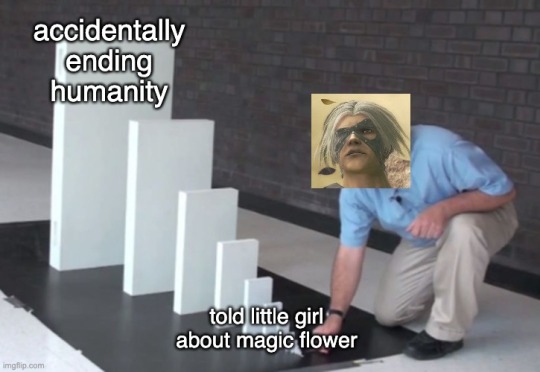
it was an accident, who hasn’t done it
#in all seriousness guys#i don't think he killed the shadowlord thinking#im gonna end humanity bc u kidnapped my girl#i think he was thinking#im confused and i don't understand the papers devola and popola threw at me#and i don't know that killing this guy ends it all#i mean bestie just had his whole world shaken#his book bro is dead#his skele son is dead#he also doesn't really think about things a whole lot#and that's the beautiful tragedy#thank u for listening#nier#nier gestalt#nier spoilers
127 notes
·
View notes
Note
Emil is a human? THIS?

I still think I should be allowed to kill him for using annoying advertising strategies
NIER LORE TIME!!! (spoilers under the cut)
Okay, so, Emil used to be a sweet little boy with a horrible power of turning everyone to stone with his gaze.

He's an ancient weapon made via human experimentation along with his twin sister, Halua. During the plot of "NieR: Replicant"/"NieR: Gestalt" he ends up having to fuse with her and retains her mechanical body as a result.

The body gets destroyed during the story's finale, leaving only the head. Between events of the first game and "NieR: Automata" Emil helps humanity fight with aliens, who at one point invaded Earth, by cloning himself (he loses memories because of that, but there is a side quest about helping him get them back). And then he opens a shop.

So, this is a story of our beloved Emil. 💜 Pls don't hurt him, he already had a shit life. T^T
15 notes
·
View notes
Text

Tyrann is hot
#nier tyrann#nier spoilers#nier#nier replicant ver.1.22474487139#nier remake#nier replicant#nier remaster#nier gestalt
28 notes
·
View notes